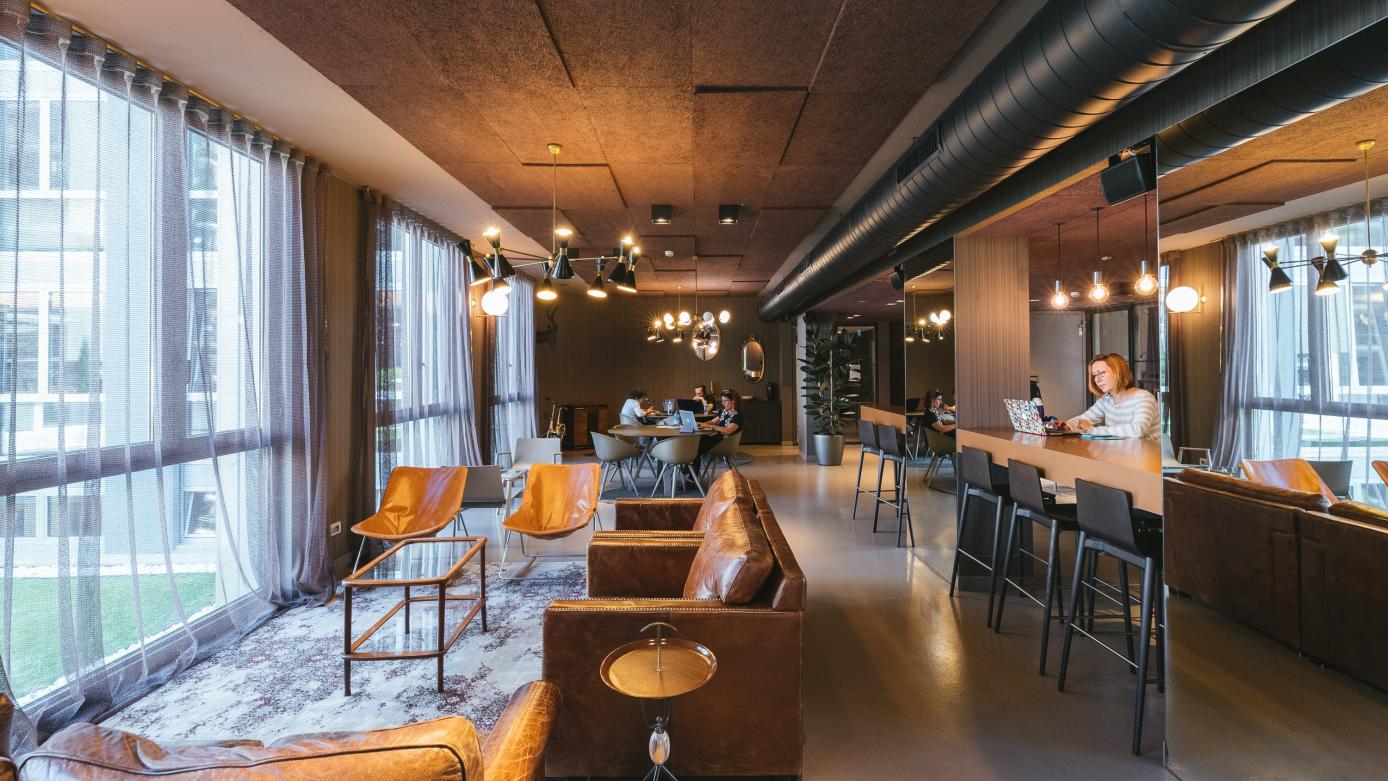Main
When buildings breathe well, we breathe well
There is just something about fresh air. No wonder, it’s the cure-all for most people. Feel tired? Need a break? Go outdoors and get some fresh air and bingo you’re invigorated. Everything seems easier, colleagues and family are friendlier, ideas you had long searched for suddenly fill your head. It’s so simple.

Ventilation
We don’t need a scientific explanation to tell us why it’s so good. Right? Well no, except if we’re trying to replicate the effects somewhere else, like indoors, for instance. Yes, nature has a lot to teach us. So let’s get started. We’ll tell you what we’ve learned.
“Everyone has the right to breathe healthy indoor air”
The key component in fresh air, as you already know, is oxygen. It is essential for the conversion of food into the energy that sustains and powers your brain cells and the cells of your immune system. If you’re not already aware, you probably suspect that indoor air may not have enough oxygen. And you most likely realize that the air in indoor environments contains undesirables, actually even harmful substances that can cause serious problems for our bodies and minds. Sometimes the effects only appear after many years of exposure.
Putting things in perspective
Individually, these substances are troublesome, but when they join forces, their collective impact can be drastic, even deadly. To put things in perspective, on a daily basis, we require around 0.75 kg of food and about 1.5 kg of liquid, but we need 15 kg of air. Since we on average spend 90% of our time indoors, the cleaner and fresher the air we breathe there, the less likely we are to experience health issues and related symptoms, such as irritated eyes, nose and throat, or asthma, allergies and headaches.

Opening windows will not solve our needs
What you can do
The most obvious solution to remedy stuffy, stale indoor spaces is to bring in some fresh air. So just open a window.
Wait a minute, not so fast. Think about it. Does the outdoor air contain pollutants? Are you sure, you want to throw the warmth or coolness out the window? Waste all that energy? Is that sustainable? Does it make economic sense?
Well there is another way of doing things, actually. One that is similar to opening a window. It’s a designed ventilation system. Of the several ways to modify indoor air quality, ventilation may be the most familiar and perhaps the oldest. Everyone has opened a window to cool off a hot room, allow steam from a hot shower to escape or to freshen up a stuffy indoor space. In fact, ‘ventilation’ and ‘vent’ both have their roots in Latin, Middle English, Old French, with meanings such as ‘wind,’ ‘release air,’ ‘air out.’ The practice has been around for quite some time.
Ventilation, a building’s way of breathing
On the most fundamental level, mechanical ventilation is about the controlled evacuation of impurities and excess heat, and the regulated introduction of fresh, tempered air into buildings. It also provides air movement and humidity control. Ventilation, a most useful, pleasant and effective means of managing indoor air quality (IAQ), serves buildings much the same as lungs serve the human body, maintaining a healthy organism.
“Duncan: This castle hath a pleasant seat; the air nimbly and sweetly recommends itself unto our gentle senses.”
Many architects and innovative builders think of buildings as living and breathing organisms, which certainly has a great deal of merit, especially if you’re considering sustainability. So with this in mind, you can imagine how comfortable and productive you can feel in a building with a continuous influx of healthy, fresh air. Air replacement, or mechanical ventilation, is the most effective way to provide fresh, filtered and tempered air to make the building and people feel good inside.
-
ventilation
Air quality and your productivity and health
With people spending about 90% of their lives indoors, buildings have a substantial impact on the health and well-being of their occupants.
-
ventilation
How indoor climate affects us
There are many factors at play in an indoor setting that can cause our bodies and minds to feel and think differently - temperature, humidity and air pollution being the main contributors.
-
ventilation
Ventilation and the health of your building
In our push to cut carbon emissions, the pressure to increase the energy-efficiency of our buildings is intensifying.


